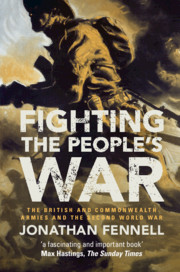Book contents
- Fighting the People’s War
- Armies of the Second World War
- Fighting the People’s War
- Copyright page
- Dedication
- Contents
- Illustrations
- Figures
- Maps
- Tables
- Acknowledgements
- Abbreviations
- Additional material
- Introduction
- Part I The Military and Political Context
- Part II The Great Crisis of Empire
- Part III Transformation
- Part IV The Limits of Attrition
- Part V Redemption
- Part VI The Post-War World
- Conclusion
- Book part
- Notes
- Select Bibliography
- Index
- References
Select Bibliography
Published online by Cambridge University Press: 21 January 2019
- Fighting the People’s War
- Armies of the Second World War
- Fighting the People’s War
- Copyright page
- Dedication
- Contents
- Illustrations
- Figures
- Maps
- Tables
- Acknowledgements
- Abbreviations
- Additional material
- Introduction
- Part I The Military and Political Context
- Part II The Great Crisis of Empire
- Part III Transformation
- Part IV The Limits of Attrition
- Part V Redemption
- Part VI The Post-War World
- Conclusion
- Book part
- Notes
- Select Bibliography
- Index
- References
Summary

- Type
- Chapter
- Information
- Fighting the People's WarThe British and Commonwealth Armies and the Second World War, pp. 861 - 898Publisher: Cambridge University PressPrint publication year: 2019



